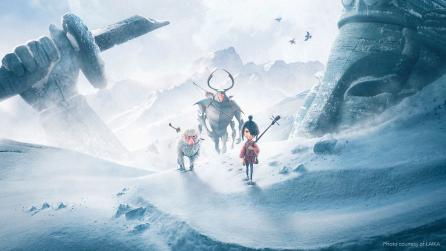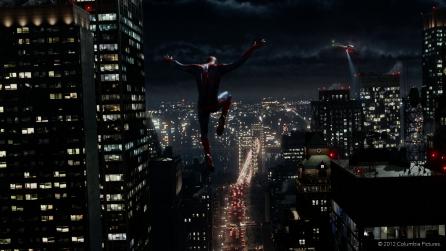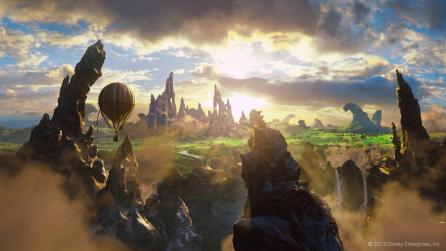Film and TV
Bottleship VFX: preparing for a more complex look development and lighting future
How one studio realised now was the time to future-proof their pipeline
Bottleship VFX are a studio in their element with fire, water, particles and destruction.
Working mostly on feature films, this Bulgarian-based outfit specializes in projects that require a lot of heavy dynamics.
Increasingly they’re getting involved in environment work too, and the demands of this different type of work have necessitated a re-think on their look development and lighting pipeline.
We caught up with Hristo Velev, founder of Bottleship VFX, to find out more.
The need for change
In recent years, Hristo has noticed a marked increase in the the volume and complexity of shots passing through Bottleship - particularly as they’ve started working on more environments: “It was becoming obvious that a traditional approach of lighting these was not effective enough,” he says.
“The scenes were quickly becoming both too heavy and too numerous to be easily dealt with by a compact team, and propagating changes across these scenes was becoming too cumbersome.”
The team started casting about for a solution that could take on the challenge, and quickly heard about Foundry’s market-leading tolset for look development and lighting:
As we were researching new tools to help us overcome these increasing challenges, we came across Katana, which seemed tailored to fixing them. It was remarkable how our ideas about the ways problems could be solved were pretty much exactly what Katana was doing - and more. They’re natural ideas that we just haven’t seen implemented fully anywhere else.
After giving it a lot of thought, the team made the decision to invest in Katana, and haven’t looked back. As Hristo says: “Even though we’re just starting with Katana, our enthusiasm is only growing. The architecture is very capable and the deferred loading which enables us to just open a scene and head straight to the point we need to do our edits, without waiting forever for scenes to open, is a huge productivity boost.
We have always had problems with big numbers of shaders - changing or adding features to lots at once, for example. The hierarchical and attribute based definitions that get resolved to an actual shader on geometry at render time is great.”

Making it easier and faster
Often, one of the biggest challenges a studio faces when implementing a new toolset is the technical work required to integrate it smoothly into the pipeline. Pipeline developers’ time is precious - particularly for smaller studios with finite resources.
Fortunately, Bottleship were able to address this issue: “Katana is very pipeline friendly - you can Python everything you need, create custom nodes for things, and use them as presets with hardly any user involvement after deployment.”
This time-saving, ease-of-use is a factor that runs all the way through Katana, as Hristo point out: “It’s set up in a very smart way. The deferred loading allows an artist to immediately find the location in a big scene that needs work and start off, without waiting for loading of all kinds of dressings that big environments contain.
The recipe graph keeps the build of the scene visible and understandable, compared to DCCs where all the information is in the state of the scene, but you’ll need to unravel that to figure it out, which is too slow and frustrating when any realistic complexity builds up.
Templates are easy to set up and most importantly - to actually reuse. Combined with Shotgun and the graph, good chunks of the setup get made once and just left to work on most future setups untouched.
And lastly, the hierarchical attributes that define shaders are great - when you want to tweak a certain wooden one, for example, you only touch the attributes applied to a certain place, and the rest remain inherited from the root. You only touch the level you need to touch, and changes propagate automatically.”

Focusing on the artistry
All of this ultimately means Katana is a great choice for studios like Bottleship that are looking to deliver the increasingly complex, data heavy CG being demanded by clients: “It's just easier to manage large collections of assets with Katana, and use the hierarchies to shade them efficiently”, says Hristo.
“Complex look changes involving many tweaks to lighting and materials are easily tested and mixed together.”
Beyond performance, Katana is for lighting, which is a creative process. It’s therefore imperative that it allows artists to focus on creativity. This is another area in which the toolset excels.
Hristo highlights the ability to have lighting setups in separate node branches in Katana, making non-destructive, additive experimentation with lighting very easy: “The opportunity to work on a whole sequence and preview the look on all related shots from a single session is great - it’s much easier to implement changes that cover the whole sequence, and adjustments that are localized to a shot. All that in nice portable subtree that can easily be repurposed.”
Being able to work across multiple shots at once has the added benefit of eliminating a lot of the drudgery that comes with doing repetitive work, as he explains: “It’s the removal of the tedium that comes with propagating changes across shots.
You really want to only focus on the work, not the logistics. With Katana, a lighting change is made only at the right level, and it propagates downwards immediately. This makes exploration of different looks much faster, and that allows for much more refinement in the same budget and schedule - the ultimate goal, really.”
And the trickle-down effect goes all the way through to the client, Hristo explains: “Katana enables us to have much more frequent updates, with even subtle changes quickly moving across the entire pipeline, so we end up delivering cuts much faster. That’s obviously great for directors - you can see more and guess less.”

Why smaller studios should be taking note
Hristo is a staunch believer that smaller outfits like his have just as much to gain from adopting a Katana-led pipeline as larger ones: “Nowadays a smaller company looking to expand into bigger work needs to efficiently deal with a rapidly expanding volume of work without just throwing people at the problem. Good lighting artists are rare and expensive, and it’s most efficient to give them a smart architecture so they can be productive. “
On this, his is just one of a growing multitude of voices echoing similar opinions, with smaller studios all over the globe recognising the long-term ROI savings Katana offers - as illustrated in this article with Malaysian-based VFX studio, Cinemasphere.


